 |
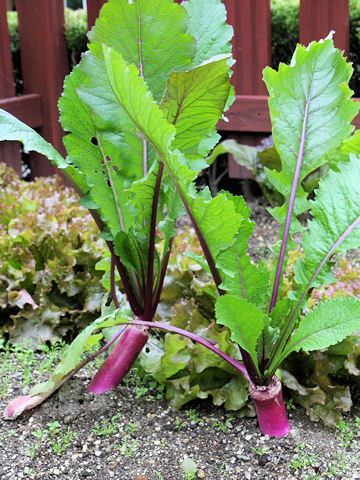

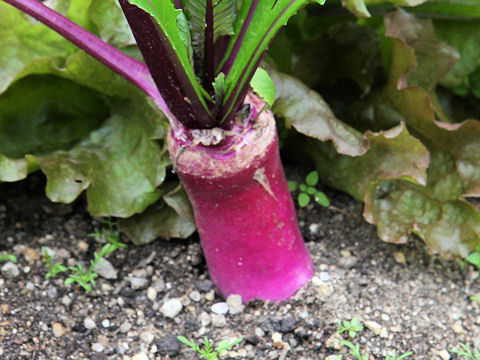

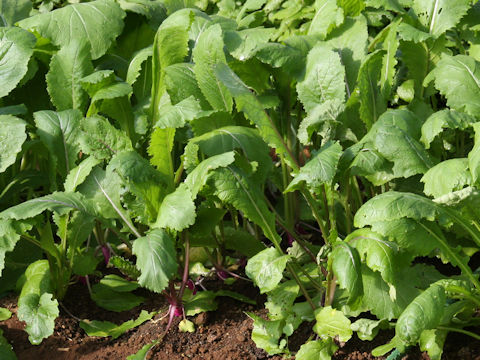

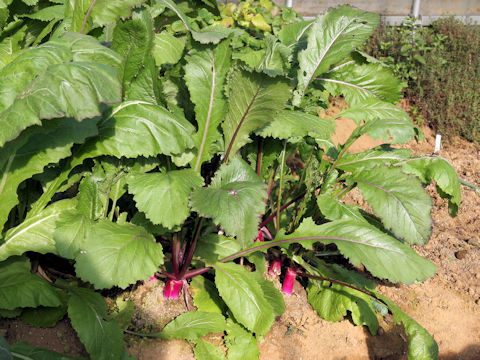

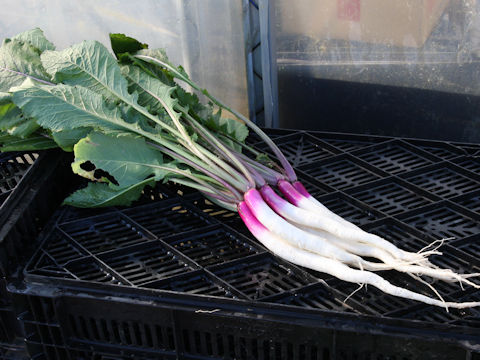

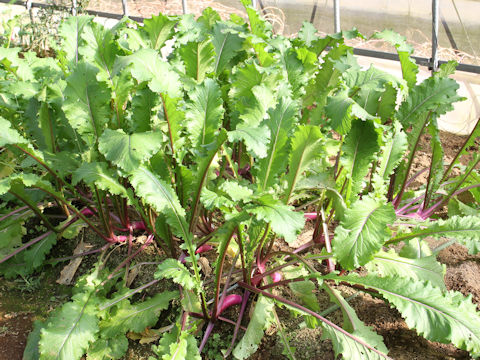

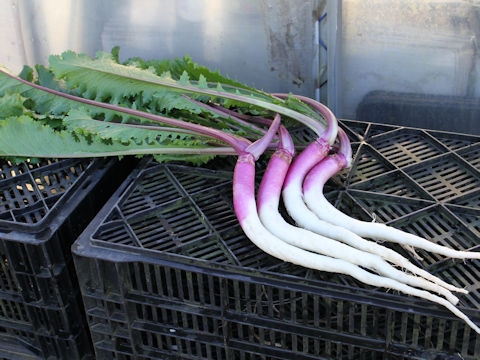

|

|
滋賀県日野町鎌掛(かいがけ)が原産の伝統野菜です。室町時代に当地の領主であった蒲生貞秀がこの野菜を発見し、栽培させたものが発祥とされています。その後全国に広まり、現在では西日本の幅広い地域で栽培されています。根は長さ25〜30センチになり、比較的硬いため、主に漬物にして利用されます。別名で、「ひのなかぶ(日野菜蕪)」や「あかな(赤菜)」とも呼ばれます。写真中5・下は、改良品種の「べにむらさき」(中原採種)。
|

|
アブラナ科アブラナ属の一年草または二年草で、学名は Brassica rapa var. akana (syn. Brassica campestris ssp. rapa var. akana)。英名はありません。
|

|
The "Hino-na" (Brassica rapa var. akana) belongs to Brassiaceae (the Mustard family). It is an annual or a biennial herb that is a traditional vegetable that originates from Kaigake in Hino Town, Shiga Prefecture. It is said that the vegetable was discovered and cultivated by Gamo Sadahide, the local lord of the area, during the Muromachi period (1336-1573). It later spread throughout the country, and is now cultivated in a wide range of areas in western Japan. The roots grow to a length of 25 to 30 cm and are relatively hard, so they are mainly used to make pickles. It is also known by the names "hinona-kabu" (hinona turnip) and "akana" (red leaf). The 6th and bottom photos show the improved variety 'Beni-murasaki' (Nakahara Seed Co.).
|

|
[上・中1] 愛知県安城市「デンパーク」にて、2007年11月02日撮影。
[中2] 千葉県香取市大角にて、2010年12月03日撮影。
[中3・中4] 同上にて、2010年12月27日撮影。
[中5・下] 同上にて、2015年12月05日撮影。
|






